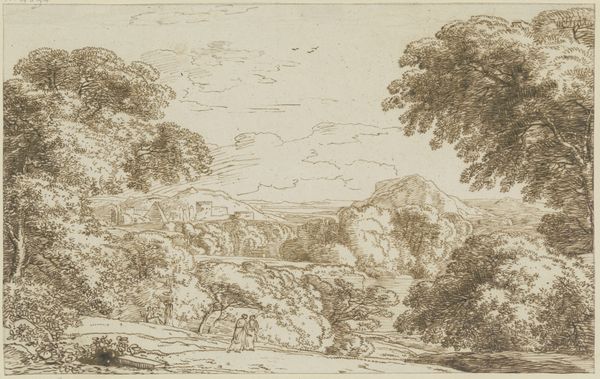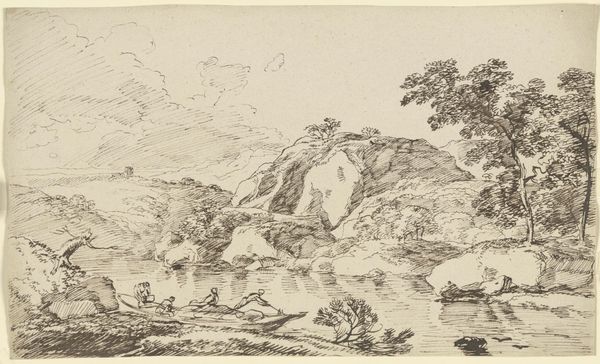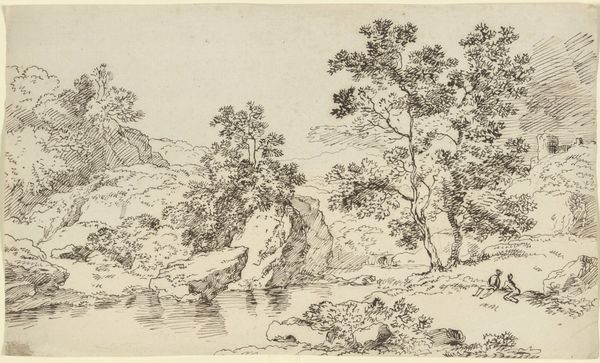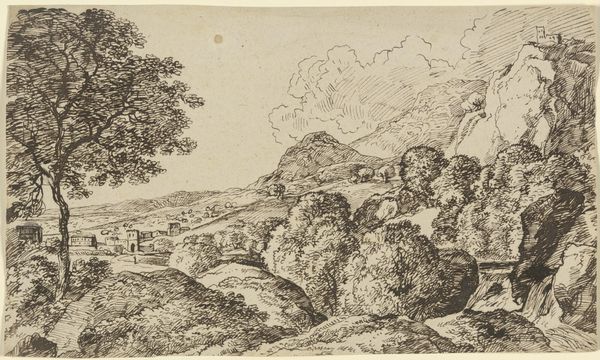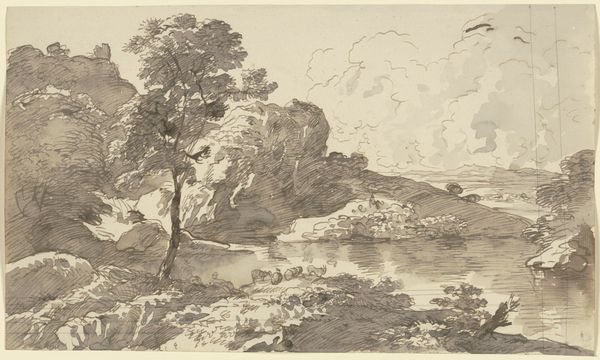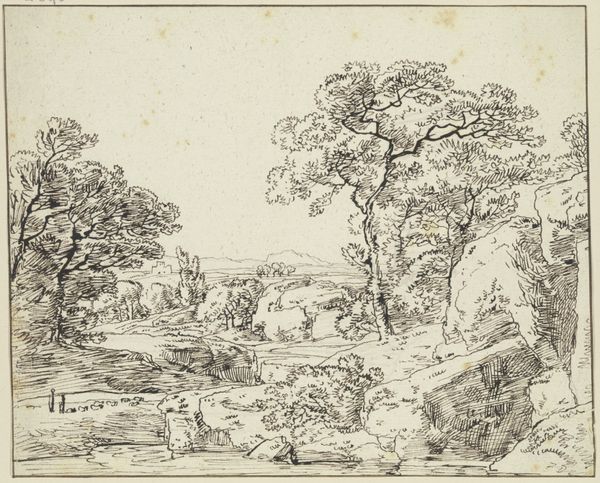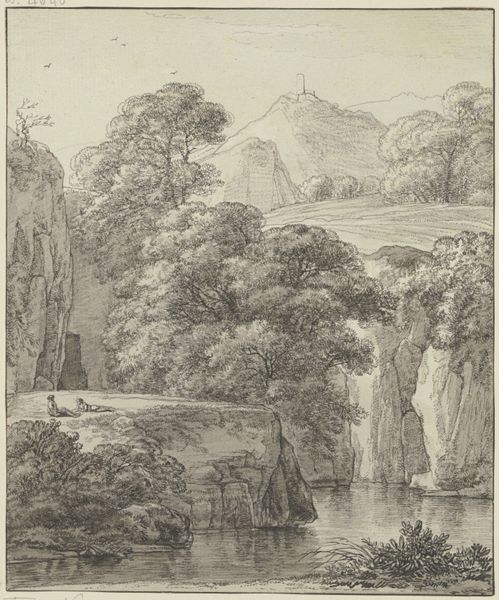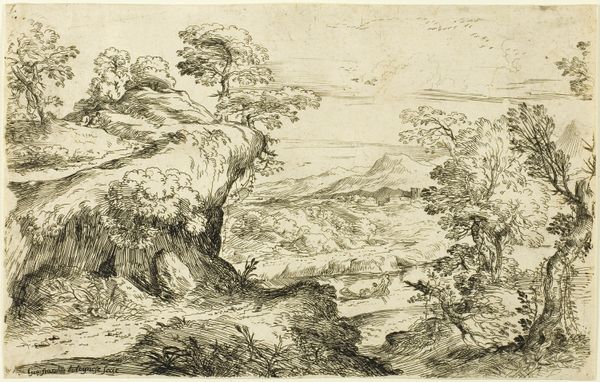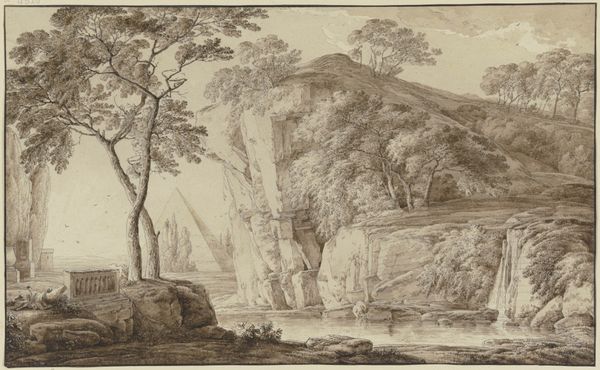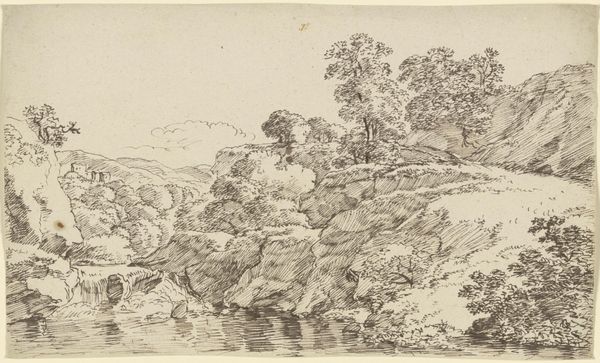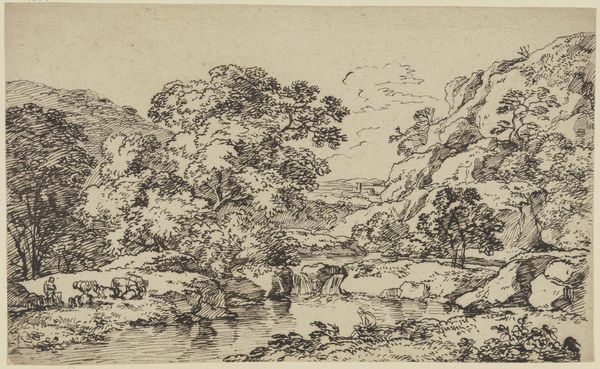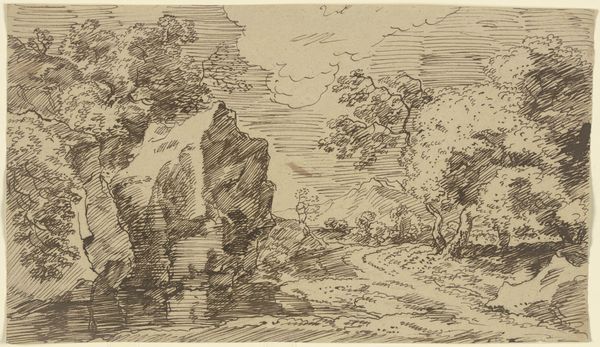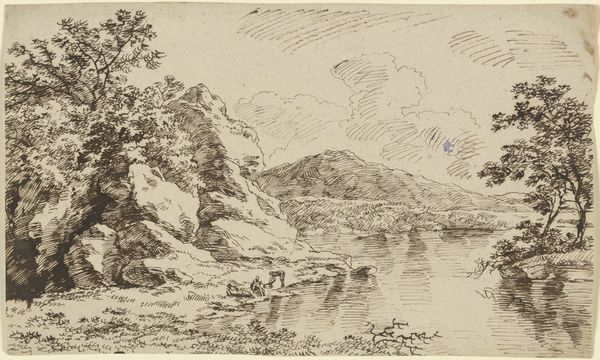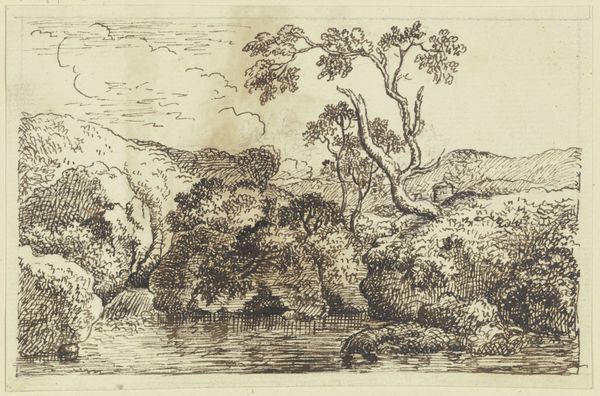
drawing, etching, plein-air, ink
#
drawing
#
etching
#
plein-air
#
landscape
#
figuration
#
ink
#
romanticism
#
line
#
history-painting
Copyright: Public Domain
Curator: Here we have an etching entitled "Mountain landscape with staffage" by Franz Kobell. The artwork is held at the Städel Museum. Editor: It’s quite striking! The level of detail achieved just through lines and shading creates such a depth to this idyllic landscape. It evokes a certain calmness, wouldn't you agree? Curator: Yes, that feeling is deliberate. Kobell created many landscapes that idealize nature. This ties into the Romanticism movement's fascination with unspoiled wilderness and their relationship to feeling and expression. It challenges the prevailing academic views of painting within his artistic circles. Editor: It's interesting how the artist incorporated "staffage"—the little figures placed into the composition. How do you feel about their placement? What do they mean to the composition? Curator: It was customary within history painting; to add minor figures as part of an overall allegorical message or compositional device. By including figures along the shoreline, Kobell creates scale but also asks the viewer to reflect on the history represented through such images of contemplation in a picturesque environment. Editor: It appears like they are in contemplation... Maybe even melancholic. Curator: Interesting perspective. Landscape paintings and works of art were important politically and shaped views of specific landscapes as sites of national heritage. He challenged some political notions in that same stroke through landscape imagery that had strong philosophical concepts and visual metaphor. Editor: It feels that this natural world might invite all those grand reflections of human destiny or spirituality you discuss and I recognize! Curator: Agreed. The piece showcases how seemingly simple natural images could become very complex visual arguments about place, nation, and history itself when distributed through exhibitions, print culture, and state institutions of his day! Editor: Understanding his intent does expand how the artist manipulates such powerful signs of the natural world. Thank you! Curator: Of course. These kinds of pieces become all the more interesting as we explore them further.
Comments
No comments
Be the first to comment and join the conversation on the ultimate creative platform.
